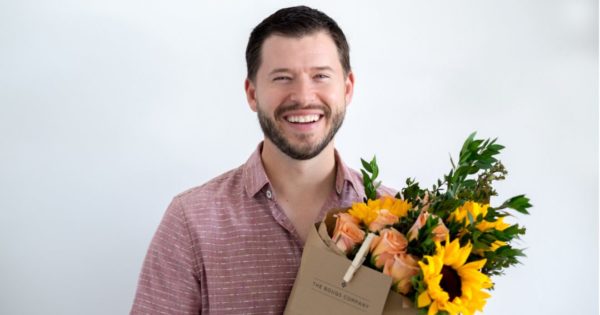
Why Brand Building is the Best Investment Against a Downturn – John Tabis, Founder of the Bouqs Company
In this episode, John Tabis, the Founder of The Bouqs Company shares his thoughts on why brand building is the best investment against a downturn, and his fundraising journeys through Shark Tank and beyond. In addition, he shares why a vision-driven CFO is the best business partner a CEO can get, and what traits to look for in a CFO hire.

Speaker: John Tabis, Founder and Chairman of The Bouqs Company
John is a proven brand building expert and entrepreneur with deep experience in innovative media ventures and consumer products, John Tabis is the Founder and Chairman of The Bouqs Company. In 2012, along with co-founder Juan Pablo Montúfar, Tabis launched the Marina del Rey, California-based company, now an industry leader in the online floral space that delivers flowers and plants fresh from eco-friendly, sustainable farms around the world to doorsteps nationwide. Prior to launching Bouqs, Tabis worked in corporate brand strategy for Disney and ShoeDazzle and advised Fortune 100 clients at Bain & Company.
Listen to the Episode Here:
Listen to Spend Culture: Stories of CFOs and Company Culture
Notable Quotes:
So as this is a podcast that focuses on the stories of when people, spend, and organizations meet, can you tell me a little bit more about your fundraising journey? How did you get your company up and running? Who did you speak to to get the funding?
Starting Bootstrapped With a Strong Founding Team
We actually launched the company on a grand total of thirteen thousand dollars of investment and that is not enough to do anything. But we were scrappy, we were driven and we had a bunch of people who really believed in it that were pitching in time for free.
I had a former employee of mine at a previous staff who worked as an unpaid intern in marketing at a friend of mine who worked for us for free. He was working at an ad agency, sort of our creative director. And then we had friends and friends of friends. And my mom pitched in on customer service and just sort of people put their heads together and said, hey, we can get this thing off the ground.
Learning Lessons of Pitching Too Early
I went out and tried to fundraise for real maybe two months after we launched. And so having have worked at Shoe Dazzle, I got to meet a couple of the board members. They were investors. Some friends had raised money for a company. So I got some introductions. And what I found very quickly was that I had no idea what I was doing. I was pitching to the wrong people, and I was doing a terrible job of it in a very nonchalant way. I came from the Walt Disney Company, right, which is this world-class big organization, and I thought it was this ragtag group of people trying to figure it out – and I sort of approached fundraising that way.
It was very much too casual. It was much too early. So after about five, six weeks of that, I shut it down and I realized that I didn’t know what I was doing and the business just didn’t have enough traction on it. So we focused on the business for a couple more months, three or four more months, got to that bigger revenue numbers. And then we went out and raised money and sort of with a much better approach, a cleaner deck, knowing who to talk to more.
The $1.7Mil Seed Round
We still didn’t get like, you know, we didn’t get Andreessen Horowitz to write a three million dollar check, but we got some angel investors to put in, you know, twenty-five thousand, fifty thousand. Then some friends of friends who were at Micro Voices put in one hundred two hundred thousand. Pretty quickly we had gathered together about five hundred thousand dollars. And, that was really the catalyst.
We got kind of a half-million soft circled, and then Wavemaker Partners, which is a VC here in L.A., said we’ll put in a chunk. Pretty quickly then afterward, Quest Venture Partners from the valley came down and all of a sudden we had a seed round pulled together, and that ended up being a grand total of $1.7mil. But it really started with those small checks of local angels and that sort of building our reputation around town and helping us gain an audience with those bigger investors.
What were your biggest lessons when fundraising?
Prove Out Value Before Seeking Investment
Yeah, you know, I think a lot of people think that they need to do is build an idea and build a product and then go raise money. The reality is, is money will come when you start creating value, right. Whether it’s through revenue, users, audience, connections, big clients or whatever it might be. Traction is what creates cash interest. Right?
Sometimes, depending on who you are, you can raise money on an idea or like a couple screenshots. But nowadays, because startup costs are lower and lower and competition for dollars is higher and higher, you have to push the company further without having to raise money. Now, some folks do that because friends and family can give them two million dollars. And so then they go out and say, hey, we’re raising our seed round and look at all of this we’ve done because our friends and family round was two million dollars. Some friends and family rounds are twenty-five bucks, right?
But none of that should be an impediment to a founder to getting to that stage. It’s really just about doing what you need to do to get to that next milestone. As long as you keep hitting those milestones, the investment will come.
So as a marketer to a founder who understands the power of brands, how could one build a brand that lasts throughout the test of time and throughout crisis?
Great Brands Stand for Something Beyond the Transaction
The way that I think brands add value in the we started the Bouq’s Company. We didn’t see brands that stood the test of time that really stood out in the world and said, hey, we exist for a reason that’s beyond selling you something.
This was ingrained in me at the Walt Disney Company, which is one of the most iconic brands in the world because it means so much to people. At Disney, we would engage with customers and it had almost nothing to do with what they were going to buy from us. But rather, it had everything to do with the way the brand made them feel with their families. Either how they felt when they were kids watching Mickey Mouse, or how they felt the first time they went to Disneyland or Disney World or the first time.
Customers almost never talked about how they want to buy this service or this product. It’s just not the way they thought of the brand. And that is how brands become lasting brands that make it through a crisis.
Now, the Walt Disney Company right now has all the parks are shut down, all the movie theaters are shut down. They’re dealing from a business perspective with a lot of things that are taking a lot of actions. But all of that is sort of secondary. And the reason they get the right to sort of work their way through these tough times is because of that place that they hold in people’s hearts.
Stand for Something Unique and Build a Story Through Your Supply Chain and User Experience
And that’s really, I think, for any brand of business, that’s really what you want to aim for. Anyone can create a product and sell it on a website, especially with the advent of Shopify. Anyone in the world can go out there and sell something online that is not going to get a business to scale, that’s not going to create a business that lasts a long time. You have to find places where you stand for things, and that sometimes means turning away business.At the Bouqs Company, we vertically integrated back to the farms because we wanted to source sustainable flowers. Thus, solving that problem. For the farmer that my co-founder had, we wanted to tell that story. We make less money by doing it. Of course, we could do it much more cheaply – we get cheaper flowers, cheaper logistics by just going and buying the same flowers that everyone else buys. But if we do, we’re just a transactional business that isn’t standing for a unique position in the world.
And so my advice to anyone would be to build something that is unique and that tells a story. Build something that speaks to people on a level beyond the economics. In short, beyond the transaction – that’ll get you through those tougher times.
Great brands truly make a business. But from a financial perspective, it can get tricky to balance, especially if you’re struggling right now through these times. Many finance leaders are talking about cutting costs or talking about how do we save money. So how can a CEO or founder best work with the CFO as a business partner to navigate these situations?
Plan for Contingencies Before They Happen, and Act Quick
The best thing you can do is have plans in place before you get into the moment. No one could have predicted covid. But, one thing everyone can have at the beginning of the year is a budget and a plan. That’s the best way to be ready for these things.
Look at Your Levers
What levers can we pull and what is going to be the situation in which we would pull those levers? And so it’s really about strategic planning beforehand.
We as a company sort of saw this coming in March and started to create those plans just in case. The questions we asked were:
- Where are the costs that are more about long term growth?
- What are the hiring plans that we have?
- And, do we need those right now? Or are they things we can push off?
- What is the marketing spend?
- What are the internal trends?
We looked at these from a priority perspective of where can we save money without really impacting the business.
This interview is taken from an episode of the Spend Culture Stories podcast.
If you’re interested in hearing more stories from other forward-thinking executives, you may enjoy these Spend Culture episodes:
Ryan Lazanis of Future Firm on forward-thinking accountants in the new normal
Suzanne Shiflet from Gym Launch on running a remote finance team
Roy Stein of BabelBark on how to fundraise and use your startup capital for growth
Jon Bordsky of Finder.com on how to align spend culture with your company culture
For more tips on remote work practices for accounting teams and CFOs, check out:
8 tips for running a successful virtual month-end close
Why the downturn is the perfect time to improve spend management
Subscribe and help us grow
Did you enjoy the podcast? Subscribe to the Spend Culture podcast on Spotify, Apple Podcasts, or wherever you listen to podcasts. If you have an extra 10 seconds, please leave us a rating or review to help us grow. Have recommendations for future podcasts? Contact our host at dani.hao [at] procurify.com.
